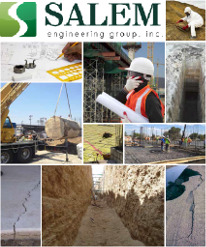“The value of an accurate and thorough hazardous material survey cannot be emphasized enough. SALEM takes great pride in each and every unique hazardous material survey conducted because we understand the importance of our work to our client’s bottom line.”
As a part of the real estate due diligence process and often times during the remodel or re-development of a property, a hazardous material survey in some form, may be required by a commercial lender, local regulatory agency or a property owner/developer. SALEM’s team of experienced and certified environmental assessors have conducted hundreds of hazardous material surveys throughout the United States of multiple types of properties ranging from single-family dwellings, to multi-tenant shopping centers and large industrial facilities. SALEM’s team of professionals utilize an intimate knowledge of local, state and federal regulations to conduct pre-demolition and pre-renovation Asbestos-Containing Material (ACM) and Lead-Based Paint (LBP) Surveys, as well as comprehensive hazardous material surveys used to identify and quantify building components which may contain hazardous materials including, asbestos, lead, polychlorinated biphenyls (PCBs), mercury, ozone depleting chemicals and radiation sources.
Asbestos-Containing Material (ACM) Survey
Asbestos is a naturally occurring mineral that was once lauded for its versatility, recognized for its heat resistance, tensile strength and insulating properties. Historically, it was used for everything from fire-proofing to home and commercial construction. It was woven into fabric and mixed with cement. Typical suspect asbestos-containing materials (ACMs) include fire-proofing, thermal systems insulation, ceiling tile, spray-applied acoustical ceiling plaster, floor tile and associated mastic, drywall tape and compound, as well as roofing materials, just to name a few. Today, asbestos is a known carcinogen.
SALEM has conducted thousands of ACM Surveys of industrial, commercial, retail, schools and multi-family residential properties throughout California and the Western United States. The ACM Survey is typically conducted as part of the environmental due diligence process during a real estate transaction and can be combined with other due diligence services including Phase I Environmental Site Assessments (ESAs) to reduce client costs. An ACM Survey is required prior to building demolition or renovation activities which have the potential to disturb ACMs. The Asbestos Survey will be conducted and supervised by an Asbestos Hazard Emergency Response Act (AHERA) accredited building inspector and in California by a State of California Division of Occupational Safety and Health (DOSH) Certified Asbestos Consultant. The ACM Survey scope of work includes conducting a visual survey of the subject building and collecting bulk samples and analysis of building materials suspected of containing asbestos. Suspect ACM are collected in a manner which minimizes the emissions of asbestos fibers into the ambient air. Observations and sample locations are documented as the work progresses. Wall board and taping mud are typically sampled as one unit. However, discrete samples of each material can be obtained. All attempts are made to collect building material samples from discrete, out of sight locations which would not distract from building aesthetics or occupant use of the building. Asbestos sample locations are selected to best represent areas of building materials which appear to be homogeneous. Multiple samples of similar suspected ACMs are collected in accordance with AHERA protocol to provide improved accuracy and quality assurance. The bulk asbestos samples are transported under chain-of-custody to a laboratory accredited under the National Voluntary Laboratory Accreditation Program (NVLAP) administered by the National Institute of Standards and Technology. All bulk samples submitted for testing are analyzed for asbestos content by polarized light microscopy (PLM). The laboratory analytical results are compiled into a single report and signed by a Certified Asbestos Consultant. The report classifies the types of ACMs and identifies the sample locations through drawings and written descriptions. The report also includes a discussion of the physical condition of each ACM identified, as well as recommendations concerning the identified ACM.
Asbestos and Lead-Based Paint (LBP) Management Plan
Over the years, SALEM has prepared numerous Asbestos and Lead-Based Paint (LBP) Management Plans for many residential, commercial and industrial buildings in California, Nevada, Oregon and Arizona. An Asbestos and LBP Management Plan typically requires an original inspection (ACM Survey) to determine whether ACMs and LBPs are present within the subject building. Under the plan requirements, the subject building is then re-inspected within a designated time frame (every three years) to re-evaluate the condition of the material. The plan will typically call for yearly notifications to building occupants pursuant to state and local requirements and provide custodial staff with awareness training.
Asbestos Abatement Final Clearance Air Monitoring
After asbestos abatement activities have been completed within a negative pressure enclosure ("containment"), highly trained SALEM personnel have conducted numerous Asbestos Abatement Final Clearance Air Monitoring projects in general accordance with AHERA protocol. Asbestos Abatement Final Clearance Air Monitoring project settings have included industrial buildings, office buildings, grocery stores, retail strip-shopping centers, multi-tenant commercial buildings, schools, and multi-tenant residential buildings. Asbestos Abatement Final Clearance Air Monitoring is conducted in accordance with CCR Title 8, subsection 1529(f); CCR Title 8, subsection 5208(d); NIOSH 7400 method; and CFR Title 40, Part 763, Subpart E, Appendix A. At the request of the client, final clearance air samples can be analyzed on-site by trained SALEM personnel in order to expedite the completion of the project or be analyzed off-site at a fixed laboratory accredited by the American Industrial Hygiene Association and the National Institute for Standards and Technology. Final clearance air samples must be less than or equal to the AHERA established clearance criteria of 0.01 fiber per cubic centimeter (f/cc) of air in order for SALEM personnel to release the asbestos abatement contractor to remove the negative pressure enclosure.
Hazardous Building Material Survey
SALEM clients typically request a Hazardous Building Material Survey prior to a planned renovation or demolition of a building in order to quantify abatement and hazardous material disposal costs. Hazardous building materials are identified through a combination of sampling and analysis, as well as through a visual inspection. A Hazardous Building Material Survey conducted by one of SALEM’s highly trained and experienced inspectors may identify asbestos-containing materials (ACMs) in ceilings, flooring, mastics, roofing, thermal systems insulation or drywall tape and compound, etc.; lead-based paint (LBP) can be found on both interior and exterior walls; polychlorinated biphenyls (PCBs) usually found in caulking materials, light capacitors and electrical transformers, etc.; ozone depleting chemicals which are typically found in refrigerant systems including air conditioners and cooling rooms; mercury which can be found in thermostats and lighting; as well as radiation sources found in some smoke detectors and exit signage.
Lead-Based Paint (LBP) Survey
The U.S. EPA, United States Department of Housing and Urban Development (HUD), and the California Department of Public Health (CDPH) define LBP as paint containing greater than 0.5% lead by weight or 5,000 milligrams per kilogram (mg/Kg)/parts per million (ppm) or 1.0 mg/cm2 total lead. However, Cal-OSHA requires an exposure assessment for certain “trigger activities” at any detectable lead concentration (“whenever lead is present”) and for other construction tasks disturbing lead where components contain lead at a greater than 0.06% by weight.
On April 22, 2008, U.S. EPA issued a rule requiring the use of lead-safe practices and other actions aimed at preventing lead poisoning. Under the U.S. EPA Renovation, Repair and Painting Rule (RRP), beginning in April 2010, contractors performing renovation, repair and painting projects that disturb LBP in homes, child care facilities, and schools built before 1978 must be certified and must follow specific work practices to prevent lead contamination. SALEM has conducted thousands of LBP Surveys of industrial, commercial, retail, schools and multi-family residential properties throughout California and the Western United States. The LBP Survey is typically conducted as part of the environmental due diligence process during a real estate transaction and can be combined with other due diligence services including Phase I Environmental Site Assessments (ESAs) to reduce client costs. Inspection, and sampling procedures are performed by SALEM’s certified lead inspector/assessors in general accordance with Chapter 7 of the HUD Guidelines for the Evaluation and Control of Lead-Based Paint Hazards in Housing (1997 revision) and with procedures published by the EPA in 40 CFR Part 745 and Title X of the 1992 Housing and Community Development Act. Bulk suspect LBP samples collected are typically analyzed to detect the presence, and percentage of lead following the procedure described in EPA Method 3050B/7420. The laboratory results are compiled into a single report, signed by a certified lead inspector/assessor. This report classifies the colors of LBP identified; the lead content; and the sample locations through drawings and written descriptions. The report also includes a discussion of the physical condition of each LBP identified, as well as recommendations concerning the identified LBP.
Related Services

Site Assessments and Remediation
SALEM Engineering Group, Inc., has been a leading provider in …

Land Use Planning
Our team of certified professionals have provided environmental …

Geotechnical Engineering
SALEM Engineering Group, Inc. offers a wide range of geotechnical …

Biological Resources
SALEM utilizes strategically aligned Registered Professional …


